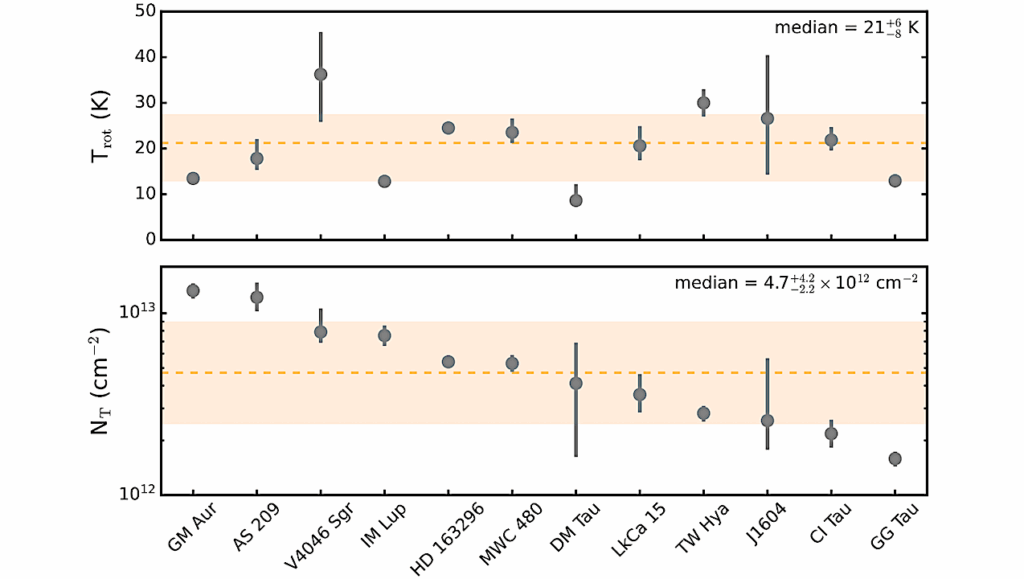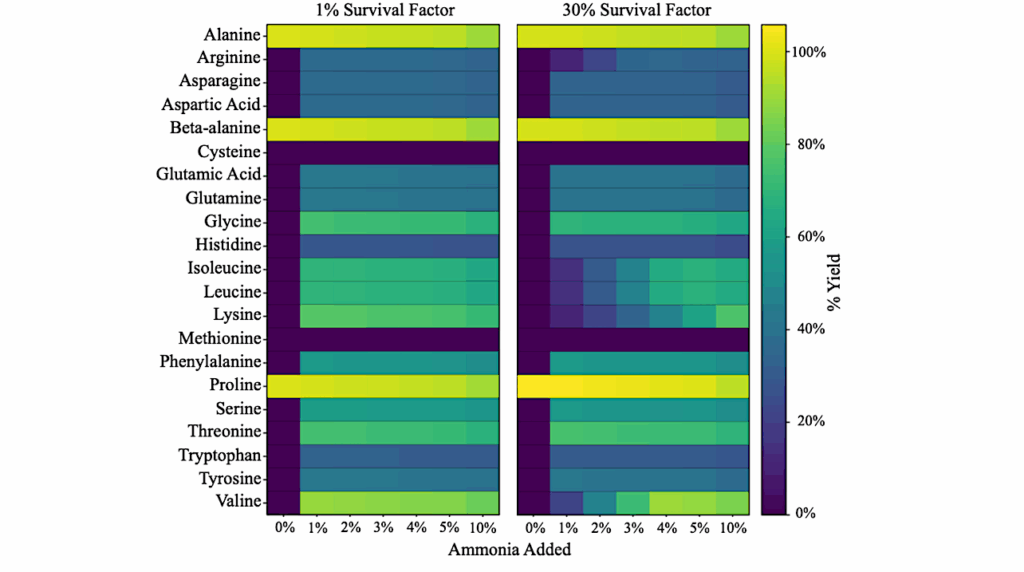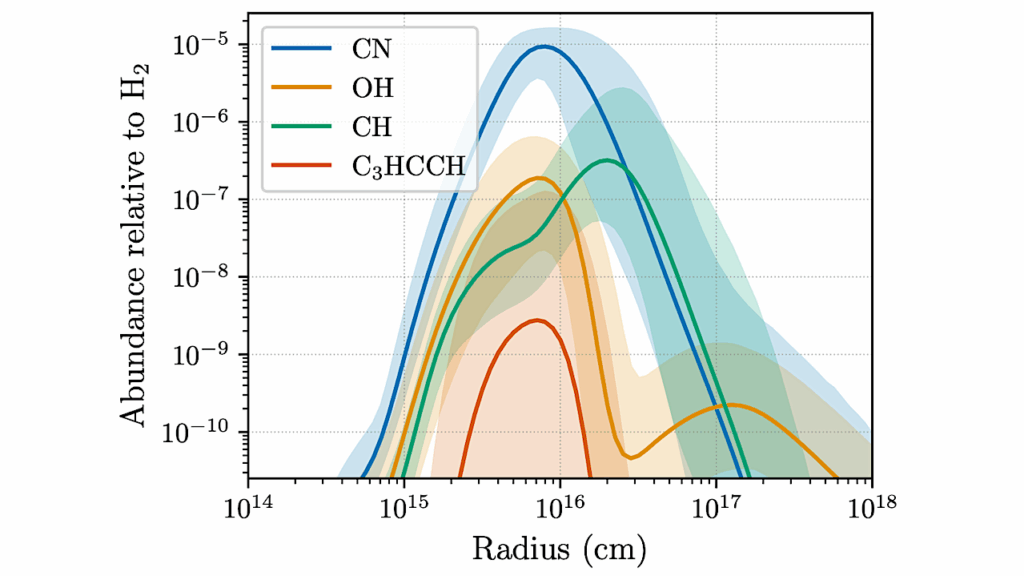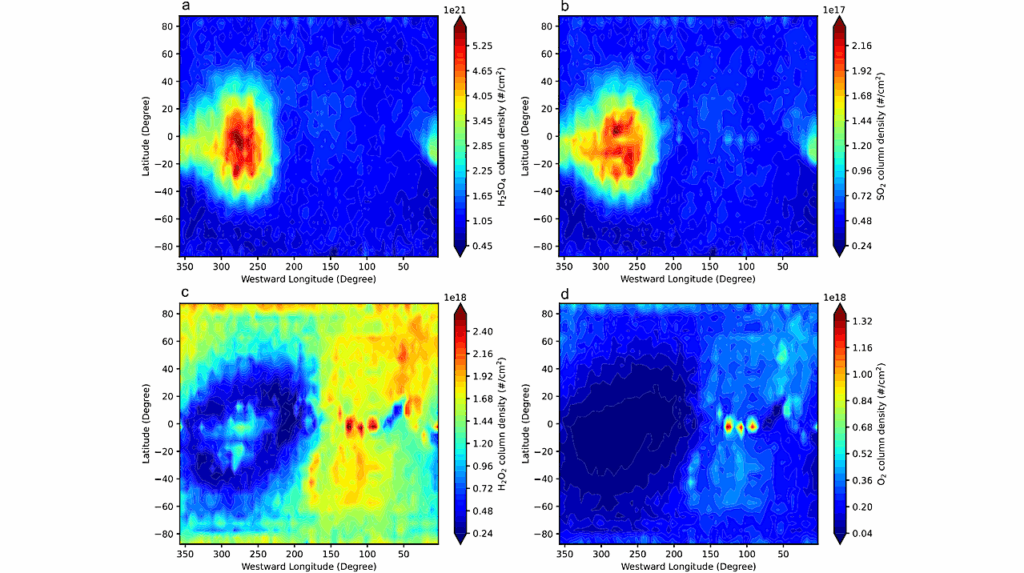Spatial Distribution Of The Aromatic And Aliphatic Carbonaceous Nano-grain Features In The Protoplanetary Disk Around HD 100546

Carbonaceous nano-grains are present at the surface of protoplanetary disks around Herbig Ae/Be stars, where most of the central star UV energy is dissipated.
Efficiently coupled to the gas, nano-grains are able to trace the disk outer flaring parts, and possibly the gaps from which the larger grains are missing. We examine the spatial distribution and evolution of the nano-dust emission in the (pre-)transitional disk HD100546 that shows annular gaps, rings, and spirals, and reveals rich carbon nano-dust spectroscopic signatures (aromatic, aliphatic) in a wide spatial range (~20-200au). We analyse adaptive optics spectroscopic observations from 3 to 4um and imaging and spectroscopic observations from 8 to 12um. We compare the data to model predictions using the THEMIS model with the radiative transfer code POLARIS calculating heating of micro- and nanometric dust grains for a given disk structure.
The aromatic features at 3.3, 8.6 and 11.3um, as well as, the aliphatic ones from 3.4 to 3.5um are spatially extended with band morphologies dependong on local physical conditions. The aliphatic-to-aromatic band ratio 3.4/3.3 increases with the distance from the star suggesting UV processing. In the 8-12um observed spectra, features characteristic of aromatic particles and crystalline silicates are detected with their relative contribution changing with distance to the star. The model predicts that the features and adjacent continuum are due to different combinations of grain sub-populations, with a dependence on the UV field intensity. Shorter wavelength features are dominated by the smallest grains (< 0.7nm) throughout the disk, while at longer wavelengths what dominates the emission close to the star is a mix of several grain populations, and far away from the star is the largest nano-grain population.
Emilie Habart, Thomas Boutéraon, Robert Brauer, Nathalie Ysard, Eric Pantin, Antoine Marchal, Anthony P. Jones
Comments: accepted for publication in A&A, abridged abstract to comply with arxiv requirements
Subjects: Astrophysics of Galaxies (astro-ph.GA)
Cite as: arXiv:2011.13773 [astro-ph.GA] (or arXiv:2011.13773v1 [astro-ph.GA] for this version)
Submission history
From: Nathalie Ysard
[v1] Fri, 27 Nov 2020 15:12:53 UTC (5,608 KB)
https://arxiv.org/abs/2011.13773
Astrobiology, Astrocheimstry,








